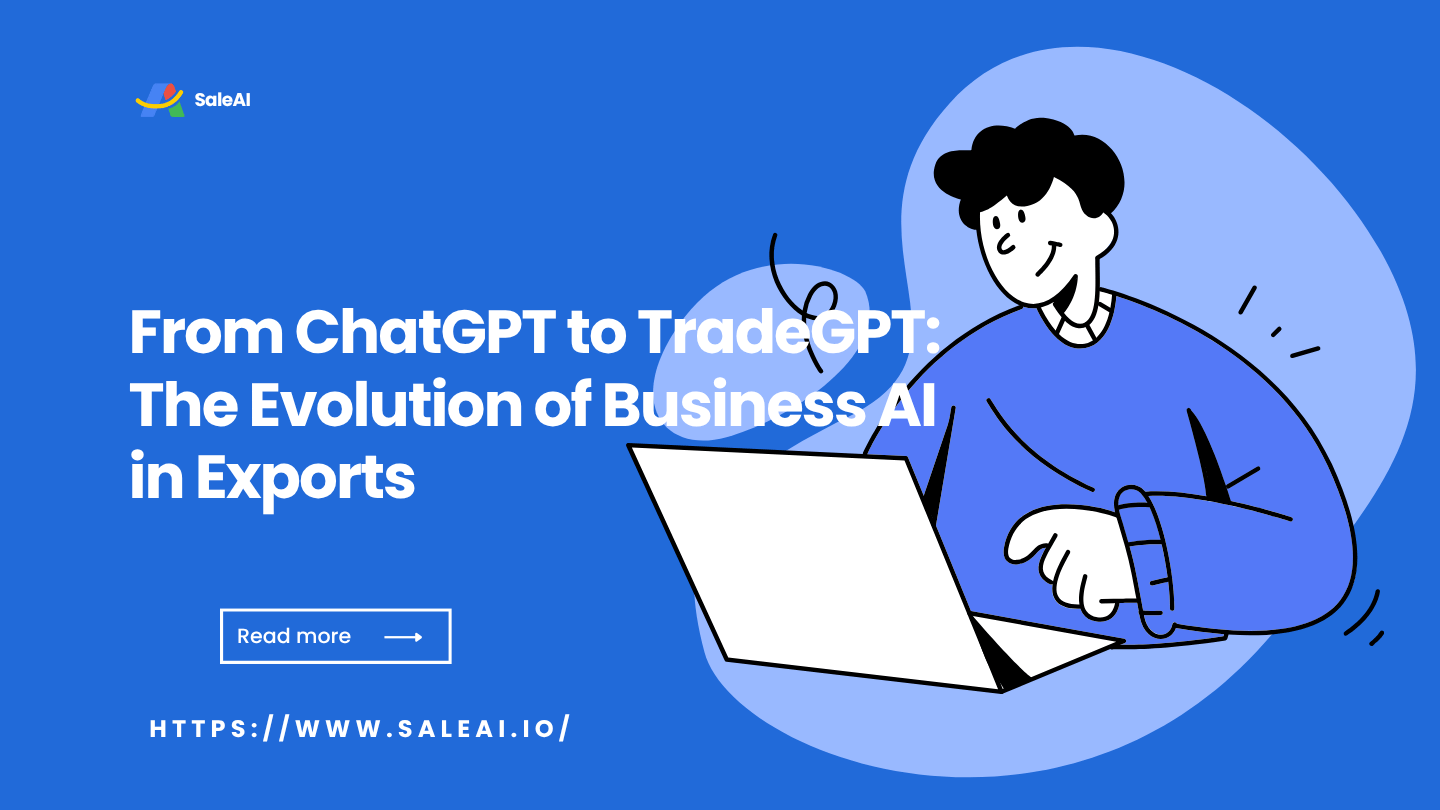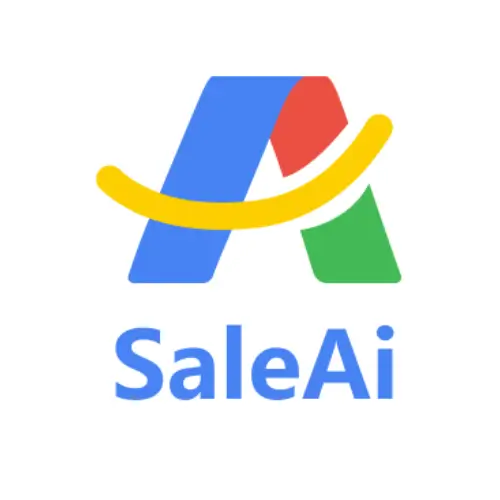
When ChatGPT arrived, it changed how the world thought about artificial intelligence.
For the first time, language models could understand, respond, and create in a way that felt human.
But as industries began experimenting with these tools, one truth became clear—intelligence without execution is incomplete.
Now, a new generation of AI is emerging: TradeGPT — purpose-built for global trade, business operations, and export execution.
At the center of this movement is SaleAI, the platform transforming conversational AI into an actionable, data-driven export engine.
1. From Conversation to Execution
ChatGPT proved that machines can understand and generate language.
But in business, understanding is just the beginning.
A sales manager doesn’t need AI to “talk”; they need AI to act—to find leads, verify buyers, generate quotes, and send follow-up messages.
This is where the evolution from ChatGPT to TradeGPT begins.
Systems like SaleAI’s Super Agent go beyond text generation—they execute tasks.
When you ask it to “analyze top importers in Europe and generate personalized outreach emails,” it doesn’t just reply with tips; it performs the workflow end-to-end.
The future of AI in trade is not conversation—it’s execution.
2. Why General AI Models Hit a Wall in Trade
Large language models (LLMs) like ChatGPT are powerful generalists.
But global trade is a domain that demands precision, structure, and compliance.
Three main challenges limit general AI in export workflows:
-
Context Depth – It lacks access to verified buyer data, trade signals, and compliance frameworks.
-
Actionability – It can describe what to do but cannot directly execute tasks within business systems.
-
Consistency – It cannot guarantee process reliability or data alignment across markets.
That’s why the world is now moving from generic intelligence to domain-specific intelligence—AI built with embedded trade logic, data context, and execution ability.
That’s where TradeGPT comes in.
3. Defining TradeGPT: The Business AI That Acts
TradeGPT isn’t a single model; it’s a framework of domain-specific AI agents designed to understand trade language, connect to real data, and complete tasks autonomously.
At SaleAI, this vision is already in motion:
-
LeadFinder Agent identifies real buyers using multi-source trade data.
-
MailWriter Agent drafts and optimizes outreach messages tailored to decision-maker tone.
-
ReportCraft Agent generates ready-to-export analytical reports.
-
InsightScan Agent evaluates company credibility before engagement.
-
Super Agent orchestrates multi-step trade tasks from start to finish.
Together, they form an AI ecosystem where conversation becomes coordination, and coordination becomes execution.
This is what TradeGPT looks like in real life.
4. The Global Shift Toward Industry AI
According to McKinsey & Company, 70% of enterprises experimenting with AI now focus on industry-specific applications.
The OECD calls this the next wave of “smart trade enablement”—AI systems embedded directly into operational processes.
And the World Economic Forum (WEF) identifies AI-driven trade automation as one of the top three factors shaping global competitiveness by 2030.
Why? Because horizontal tools like ChatGPT improve productivity;
but vertical systems like SaleAI create economic value.
The more specialized the AI, the greater its business impact.
5. From Text to Task: The Architecture of Actionable Intelligence
TradeGPT-type systems like SaleAI bridge three layers of AI maturity:
-
Language Understanding (ChatGPT era) – Comprehend and generate natural language.
-
Domain Reasoning (TradeGPT era) – Understand trade context, buyer logic, and compliance rules.
-
AI Execution (Agent era) – Perform real actions: generating quotes, sending messages, producing reports.
By combining these layers, SaleAI transforms natural language into operational output—turning “intent” into immediate business results.
In other words: you describe, it delivers.
6. How SaleAI Represents TradeGPT in Practice
Where ChatGPT stops at text, SaleAI begins with action.
It integrates AI understanding with real-world trade data and execution modules, forming the practical embodiment of TradeGPT.
Imagine a workflow like this:
-
You tell SaleAI: “Find verified electronics buyers in Singapore.”
-
LeadFinder Agent scans global databases and builds a list.
-
MailWriter Agent drafts personalized messages in minutes.
-
ReportCraft Agent compiles a performance summary.
-
The system closes the loop automatically—no switching tools, no delays.
That’s not AI assisting work. That’s AI doing work.
7. The Economic Impact of TradeGPT Systems
The numbers are undeniable:
-
McKinsey projects AI-driven exporters will achieve 25–50% higher efficiency by 2030.
-
OECD data suggests that AI-integrated SMEs are 3x more likely to expand cross-border.
-
The WTO reports that intelligent automation reduces export friction costs by 20–30%.
In short: AI that understands your language can save time.
AI that understands your business can create profit.
This is why TradeGPT systems like SaleAI represent more than a trend—they’re the new infrastructure of international business.
8. From ChatGPT to TradeGPT: The Next Leap
The world is moving from general intelligence to applied intelligence.
ChatGPT democratized access to language understanding; TradeGPT is democratizing access to business execution.
Every industry will have its own GPT.
For global trade, that future already exists—it's called SaleAI.
With its suite of specialized agents, SaleAI transforms trade knowledge into trade performance, enabling companies to move faster, decide smarter, and operate globally with the power of AI.
👉 Start Free Trial: https://www.saleai.io/


